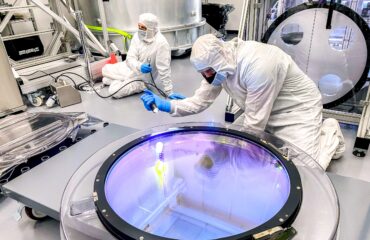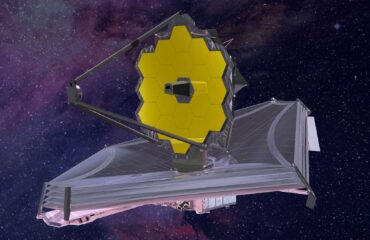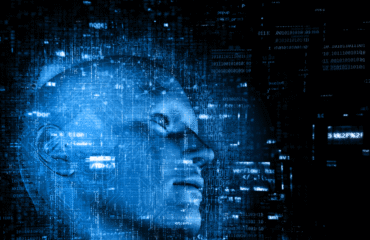Will an asteroid soon hit Earth? Short answer is, “probably”
On a morning in June 1908, in the eastern Siberian Taiga region, near the Podkamennaya Tunguska River in Russia, local people were surprised by a light, as bright as the sun, cruising through the sky, leaving a thin trail. As it approached the ground, it caused a flash, followed by a billowing cloud and a pillar of fire. The sound and shockwave of the explosion followed shortly after, knocking people off their feet and damaging structures hundreds of kilometers away. Later, people realized that the explosion was the airburst of an asteroid about 50-60 meters in diameter when it reached 6-10 km above the ground.

Location of the Tunguska strike in 1908.
Seismic stations across the entire continent detected the impact, and airwaves from the blast reached as far as Washington, D.C. Researchers estimate that the power of the explosion was about 667 times greater than the Hiroshima bomb and almost as powerful as the United States’ Castle Bravo nuclear test in 1954. It flattened an area of 2,150 km2 of forest, caused a months-long decrease in atmospheric transparency, and made night skies aglow in Asia and Europe over the next few days. The Tunguska event is the largest impact event on Earth in recorded history, and it inspired discussions of asteroid impact avoidance worldwide.

Photograph taken in 1927 in the location of the Tunguska event, showing trees that were knocked over by the blast.
For decades scientists and governments have carefully monitored Earth’s atmosphere through infrasound and satellites. It turns out that asteroid airbursts with energies comparable to those of nuclear weapons frequently occur on our planet’s surface. Fortunately, Tunguska-sized events are significantly rare. The JPL Center for NEO Studies (CNEOS) provides open access to the orbits of a frighteningly long list of Near-Earth Objects, which can inform assessments of impact probabilities over the next century. Dr. Peter Brown, Professor at the Department of Physics and Astronomy at the University of Western Ontario, estimates that, on average, one object with energy equivalent to 5 kilotons of TNT (~2,000 times weaker than the Tunguska event) hits Earth every year, while Tunguska-sized events may occur once every 1,000 years.

Artist rendition of asteroid trajectory
Improving our ability to detect and deter Earth-bound asteroids is a major goal for astronomers and governments. Today, most of the smaller space objects that approach Earth are not detected soon enough, if at all, to prepare for potential impacts. In 2013, a meteor, approximately 20 meters wide, exploded 30 km above Chelyabinsk Oblast in Russia. The explosion was visible up to 100 km away and generated a cloud of dust reaching over 26 km. With an estimated power of 500 kilotons of TNT, the explosion was at least 33 times stronger than the atomic bomb detonated in Hiroshima. The shockwaves damaged buildings and shattered windows, injuring at least 1,500 people. The Chelyabinsk meteor was not detected before the impact and highlighted the urgency of improving our detection systems.
The U.S. National Science Foundation and the U.S. Department of Energy are constructing a new observatory on the El Penón peak of Cerro Pachón in northern Chile that promises to open a new era for Astronomy. This new observatory, named after the astronomer Dr. Vera Rubin, is scheduled to be inaugurated in 2023. Dr. Steve Kahn, director of the Rubin Observatory and an astrophysicist at Stanford University in California, declared that cataloging all of the small moving objects in the solar system is one of the main objectives behind the design of the observatory. To accomplish that, while other existing large telescopes target detailed observations of individual objects, like stars and galaxies, Rubin’s unique design aims to make a deep imaging survey of the sky over the entire Southern Hemisphere.

Astronomer Vera Rubin in 1974.
Last April, Dr. Edward Lu, Executive Director of the Asteroid Institute, reported on the potential of the new Rubin Observatory to discover asteroids that may pose collision risks to Earth at the Planetary Defense Conference. This conference is a biannual meeting, in which experts from all over the world discuss the theme of potential collisions and strategies to deal with them. According to the simulations performed by Dr. Lu and colleagues, in its first year of operation, the Rubin observatory will discover over 9,000 Near-Earth-Asteroids of similar size to the Tunguska asteroid. According to Dr. Lu, only 156 of those have at some point orbits with a potential impact risk, which in most cases we can rule out within ten nights after their discovery. However, notably, eight of the asteroids assessed in the analysis could not yet be ruled out as impact risks.
The potential of the new Rubin Observatory
According to Dr. Lu’s analysis, in just the first year of operation, the Rubin Observatory should double the number of currently known Near-Earth-Asteroids with the potential to destroy entire cities in impact scenarios. In addition to the Rubin Observatory, we also have the continued international cooperation of the scientific community towards the detection of and preparation for possible impact events. Open-source computational tools, like the Asteroid Decision and Mapping (ADAM) platform, should improve the calculations of asteroid orbits, and the European Space Agency (ESA) and NASA are working together on technologies to deflect asteroids, aiming to prevent impacts. These life-threatening floating objects in space are an unfortunate reality for humankind. However, through international cooperation and technology, we are each day more prepared for potential impacts.



